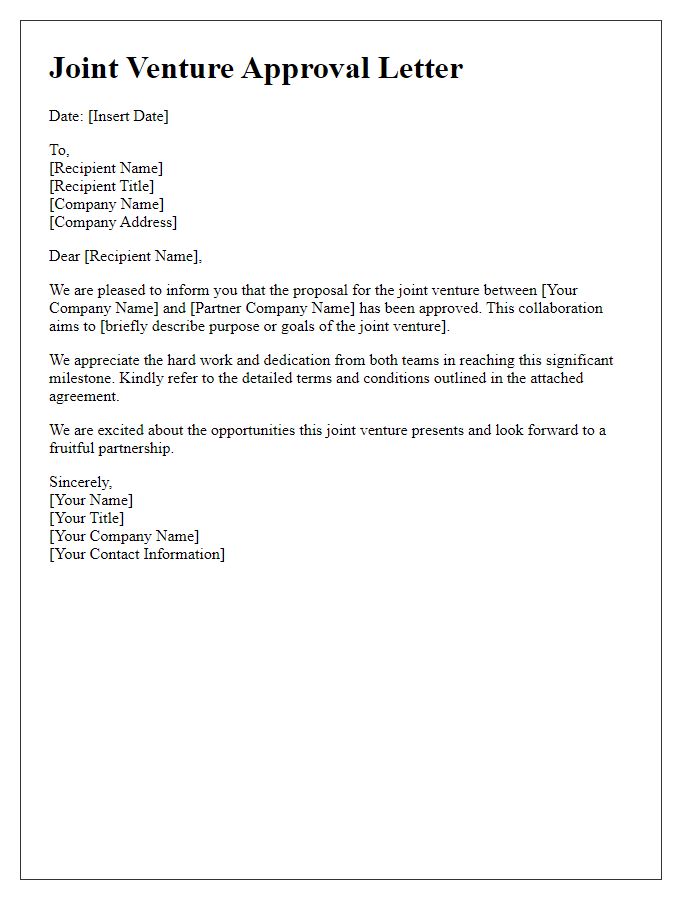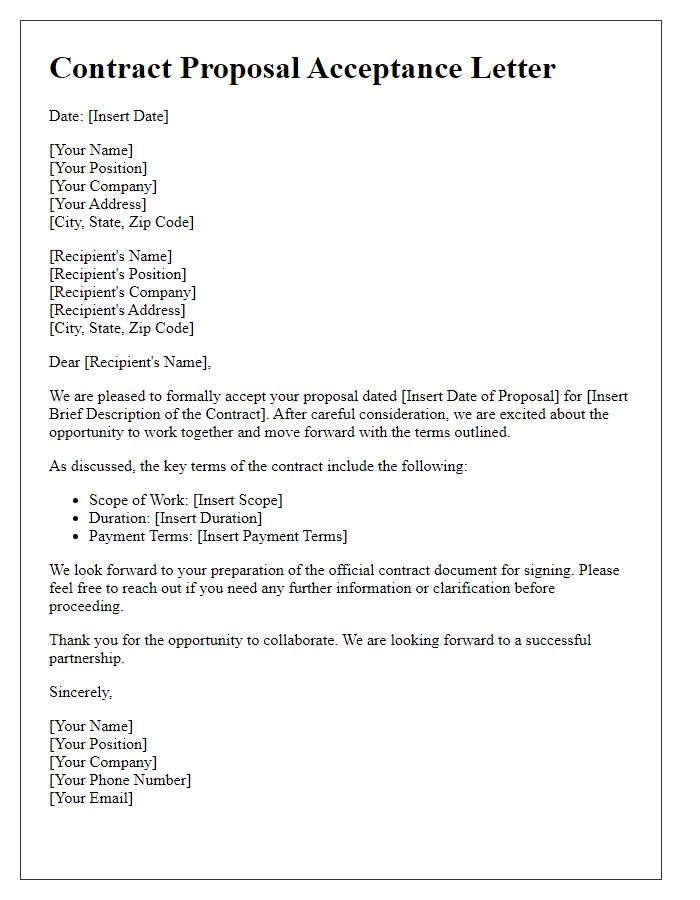Are you ready to take your business to the next level? Crafting the perfect letter to accept a business proposal can open doors to exciting opportunities and fruitful partnerships. In this article, we'll explore the key elements that will ensure your acceptance letter conveys your enthusiasm and professionalism effectively. So, let's dive in and discover how to make your acceptance letter shine!

Formal Salutation
The acceptance of a business proposal represents a significant step in establishing a professional relationship between the proposing and accepting parties. A formal salutation sets the tone for this important communication, reflecting respect and professionalism. Typically, the salutation begins with "Dear," followed by the recipient's title (such as Mr., Ms., Dr.) and last name, ensuring clarity regarding the individual's identity. For instance, in a context where the recipient is a CEO, "Dear Mr. Smith," establishes a formal approach, while also reinforcing the hierarchy and respect typically found in business communications. Careful attention should be paid to the spelling of names and titles, as accuracy is crucial in professional correspondence.
Proposal Details Acknowledgment
Acknowledgment of proposal acceptance signifies a mutual agreement between parties in a business context. Upon receiving the submitted proposal, which includes detailed project objectives and financial terms, both entities confirm the intent to move forward. Typical elements include project timelines, budget allocation of $50,000, and key performance indicators (KPIs) for measuring success. Dates for preliminary meetings, such as the kickoff meeting scheduled for March 5, 2024, should also be outlined. This acknowledgment establishes an official agreement that sets the groundwork for successful collaboration.
Terms and Conditions Agreement
A comprehensive proposal acceptance document outlines essential terms and conditions of an agreement in a business partnership or project collaboration. This document typically includes the project scope, which details deliverables, timelines, and key performance indicators (KPIs). Payment terms explicitly state the financial obligations, such as amounts due, payment methods, and schedules (for instance, 30% upfront and 70% upon project completion). Confidentiality clauses protect sensitive information shared between parties, while dispute resolution terms define procedures for addressing conflicts, possibly through mediation or arbitration. Additionally, the governing law section specifies jurisdiction, often referencing states like New York or California. These elements collectively ensure clarity and mutual understanding, minimizing potential misunderstandings in business dealings.
Project Timeline Confirmation
Project timelines play a crucial role in ensuring successful execution, particularly in complex undertakings such as construction or software development. Assigned tasks usually span specific durations, often illustrated through Gantt charts or milestone charts. For instance, in a project scheduled to commence on March 1, 2024, the initial phase might last four weeks, focusing on planning and resource allocation, followed by a two-month execution phase. Key deadlines, such as the completion of critical deliverables by May 15, 2024, ensure adherence to overall project goals. Regular reviews and adjustments can be planned at bi-weekly intervals to assess progress against established benchmarks and to align with stakeholder expectations. Agile methodologies may be integrated, allowing for flexibility in response to emerging challenges or changes in project scope. Establishing a comprehensive timeline promotes accountability among team members and facilitates transparent communication with clients.
Closing Statement and Signature
The closing statement of a business proposal acceptance serves as a final affirmation of the agreement, reinforcing commitment to the partnership or project. A well-crafted closing statement encapsulates enthusiasm for collaboration, acknowledges the importance of the proposal, and emphasizes the mutual benefits expected to arise from the partnership. It is essential to express appreciation for the opportunity and outline steps for moving forward. A professional signature should follow, including the signer's name, title, company, and date. This formal closure indicates acceptance and readiness to commence the terms outlined in the proposal.













Comments